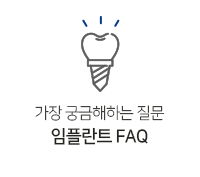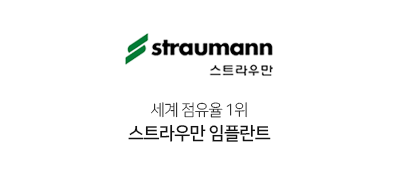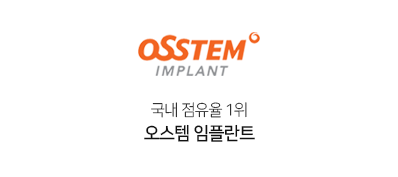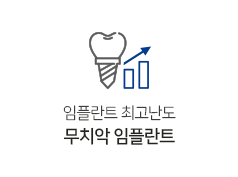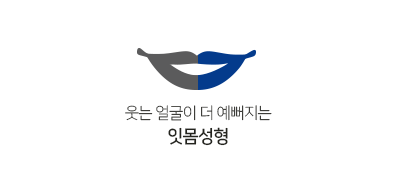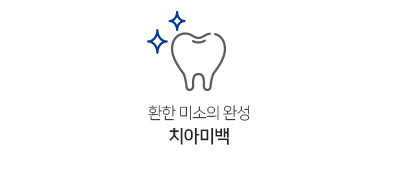20 Insightful Quotes About Which Coffee Beans Are The Best
페이지 정보
작성자 Annabelle 댓글 0건 조회 13회 작성일 24-08-26 13:07본문
Which Coffee Beans Are the Best?
The type of beans that you choose will make an enormous difference when it comes to creating a delicious cup. Each variety has a distinct flavor that pairs well with many drinks and food recipes.
Panama is the top contender in the world of rare Geisha beans. These beans are highly evaluated in cupping tests, and they are also expensive at auction. However, Ethiopia, especially Yirgacheffe beans is in close proximity.
1. Geisha Beans from Panama
Geisha beans are among the finest coffee beans that you can find around the globe. Geisha beans are prized due to their unique aroma and flavor. These rare beans are grown at high elevations and undergo a special processing technique that gives them their signature flavor. The result is a cup that is smooth, rich, and full of flavor.
The Geisha coffee plant is native to Ethiopia However, it was first introduced in Panama in 1963. Geisha coffee is famous for its high-quality flavor and taste. Geisha beans can be expensive due to the amount of labor needed to cultivate them. Geisha coffee plants are more difficult to grow because they require higher elevations and special climate conditions.
Geisha beans are delicate and must be handled with extreme care. They must be sorted carefully and meticulously prepared for roasting. Otherwise, they can become bitter and acidic.
The Janson Coffee Farm is located in Volcan. The farm is committed to improving the environment and specializes in producing top-quality beans. They make use of solar panels to generate energy, reuse water and waste materials, and employ enzyme microbes to improve the soil. They also plant trees and use recycled water for washing. The coffee they produce is a Washed Geisha and was awarded the highest score in a Panama Coffee Competition.
2. Ethiopian Coffee
Ethiopia is a major coffee producer with a long tradition of producing the finest beverages in the world. Ethiopia is the fifth largest coffee producer in the world. Their coffeee beans are highly appreciated for their distinctive fresh, fruity and floral flavors. Ethiopians, unlike many other beans, are best they are roasted to medium roast. This lets the floral notes be preserved while highlighting fruity and citrus flavors.
While Sidamo beans are known for their sour, citric acidity, coffees from other regions such as Yirgacheffe and Harar are also considered to be among the top in the world. Harar is one of the most popular and oldest varieties of Ethiopian coffee and it comes with distinctive mocha and wine flavor profile. Coffees from the Guji region are also renowned for their distinct flavors and distinct terroir.
Natural Process is a different kind of Ethiopian coffee made by dry-processing, instead of wet processing. The main difference between these two methods is that wet-processing involves washing the coffee beans, which tends to eliminate some sweetness and fruity flavor from the beans. Natural Ethiopian coffees that were processed weren't as well-known than their washed counterparts. They were more commonly used to brighten blends than available on the specialty market. However, recent technological advances have made it possible to get higher-quality natural Ethiopians.
3. Brazilian Coffee
Brazilian Coffee is a rich blend of various kinds of beans. It is characterized by low acidity and a smooth body. It has a sweet flavor with some cocoa. The flavor can differ based on the state and region where it is grown. It is also renowned for its citrus and nutty notes. It is a good quality coffee beans option for those who prefer medium-bodied coffee.
 Brazil is the biggest unroasted coffee beans wholesale exporter and producer in the world. Brazil produces more than 30 percent of the world's coffee coffeee beans. Brazil's economy is heavily dependent from this vast agricultural industry. The climate is perfect for coffee cultivation in Brazil and there are fourteen major regions that produce coffee.
Brazil is the biggest unroasted coffee beans wholesale exporter and producer in the world. Brazil produces more than 30 percent of the world's coffee coffeee beans. Brazil's economy is heavily dependent from this vast agricultural industry. The climate is perfect for coffee cultivation in Brazil and there are fourteen major regions that produce coffee.
The principal beans that are used in Brazilian coffee are Catuai, Mundo Novo, Obata and Icatu. All of them are varieties of Arabica. There are a variety of hybrids that include Robusta. Robusta is a kind of coffee bean that originates in Sub-Saharan Africa. It's not as tasty and aromatic as Arabica but it's much easier to grow.
It is crucial to remember that slavery is a problem in the coffee industry. Slaves in Brazil are often subjected to long and exhausting working hours and may not have adequate housing. The government has taken steps to deal with this issue, including programs to assist coffee farmers with their debts.
4. Indonesian Coffee
 The Top 10 Coffee beans Indonesian coffee beans are known for their earthy, dark roast coffee beans taste. The volcanic ash in the soil gives them an earthy taste and a strong body. They are ideal to blend with beans from Central America or East Africa which have a higher acidity. They also react well to darker roasting. Indonesian coffees have a rich and rustic flavor profile. They typically have notes of tobacco, leather, wood, ripe fruit, and spice.
The Top 10 Coffee beans Indonesian coffee beans are known for their earthy, dark roast coffee beans taste. The volcanic ash in the soil gives them an earthy taste and a strong body. They are ideal to blend with beans from Central America or East Africa which have a higher acidity. They also react well to darker roasting. Indonesian coffees have a rich and rustic flavor profile. They typically have notes of tobacco, leather, wood, ripe fruit, and spice.
The largest producers of coffee in Indonesia are located on Java and Sumatra with a few coming from Sulawesi, Bali, and Papua New Guinea. A lot of farms in these regions employ a wet hulling method. This is different from the washed method of processing that is common in most of the world, where the coffee cherries are separated and then washed before drying. The hulling process decreases the amount of water present in the coffee, which decreases the impact rain can have on the quality of the finished product.
One of the most well-known and high-quality varieties of Indonesian coffee is Mandheling, which is a product of the Toraja region. It is a full-bodied coffee with hints of candied fruit and intense chocolate flavors. Other types of coffee from this region include Gayo and Lintong. These are generally wet-hulled with a full and smoky aroma.
The type of beans that you choose will make an enormous difference when it comes to creating a delicious cup. Each variety has a distinct flavor that pairs well with many drinks and food recipes.
Panama is the top contender in the world of rare Geisha beans. These beans are highly evaluated in cupping tests, and they are also expensive at auction. However, Ethiopia, especially Yirgacheffe beans is in close proximity.
1. Geisha Beans from Panama
Geisha beans are among the finest coffee beans that you can find around the globe. Geisha beans are prized due to their unique aroma and flavor. These rare beans are grown at high elevations and undergo a special processing technique that gives them their signature flavor. The result is a cup that is smooth, rich, and full of flavor.
The Geisha coffee plant is native to Ethiopia However, it was first introduced in Panama in 1963. Geisha coffee is famous for its high-quality flavor and taste. Geisha beans can be expensive due to the amount of labor needed to cultivate them. Geisha coffee plants are more difficult to grow because they require higher elevations and special climate conditions.
Geisha beans are delicate and must be handled with extreme care. They must be sorted carefully and meticulously prepared for roasting. Otherwise, they can become bitter and acidic.
The Janson Coffee Farm is located in Volcan. The farm is committed to improving the environment and specializes in producing top-quality beans. They make use of solar panels to generate energy, reuse water and waste materials, and employ enzyme microbes to improve the soil. They also plant trees and use recycled water for washing. The coffee they produce is a Washed Geisha and was awarded the highest score in a Panama Coffee Competition.
2. Ethiopian Coffee
Ethiopia is a major coffee producer with a long tradition of producing the finest beverages in the world. Ethiopia is the fifth largest coffee producer in the world. Their coffeee beans are highly appreciated for their distinctive fresh, fruity and floral flavors. Ethiopians, unlike many other beans, are best they are roasted to medium roast. This lets the floral notes be preserved while highlighting fruity and citrus flavors.
While Sidamo beans are known for their sour, citric acidity, coffees from other regions such as Yirgacheffe and Harar are also considered to be among the top in the world. Harar is one of the most popular and oldest varieties of Ethiopian coffee and it comes with distinctive mocha and wine flavor profile. Coffees from the Guji region are also renowned for their distinct flavors and distinct terroir.
Natural Process is a different kind of Ethiopian coffee made by dry-processing, instead of wet processing. The main difference between these two methods is that wet-processing involves washing the coffee beans, which tends to eliminate some sweetness and fruity flavor from the beans. Natural Ethiopian coffees that were processed weren't as well-known than their washed counterparts. They were more commonly used to brighten blends than available on the specialty market. However, recent technological advances have made it possible to get higher-quality natural Ethiopians.
3. Brazilian Coffee
Brazilian Coffee is a rich blend of various kinds of beans. It is characterized by low acidity and a smooth body. It has a sweet flavor with some cocoa. The flavor can differ based on the state and region where it is grown. It is also renowned for its citrus and nutty notes. It is a good quality coffee beans option for those who prefer medium-bodied coffee.
 Brazil is the biggest unroasted coffee beans wholesale exporter and producer in the world. Brazil produces more than 30 percent of the world's coffee coffeee beans. Brazil's economy is heavily dependent from this vast agricultural industry. The climate is perfect for coffee cultivation in Brazil and there are fourteen major regions that produce coffee.
Brazil is the biggest unroasted coffee beans wholesale exporter and producer in the world. Brazil produces more than 30 percent of the world's coffee coffeee beans. Brazil's economy is heavily dependent from this vast agricultural industry. The climate is perfect for coffee cultivation in Brazil and there are fourteen major regions that produce coffee.The principal beans that are used in Brazilian coffee are Catuai, Mundo Novo, Obata and Icatu. All of them are varieties of Arabica. There are a variety of hybrids that include Robusta. Robusta is a kind of coffee bean that originates in Sub-Saharan Africa. It's not as tasty and aromatic as Arabica but it's much easier to grow.
It is crucial to remember that slavery is a problem in the coffee industry. Slaves in Brazil are often subjected to long and exhausting working hours and may not have adequate housing. The government has taken steps to deal with this issue, including programs to assist coffee farmers with their debts.
4. Indonesian Coffee
 The Top 10 Coffee beans Indonesian coffee beans are known for their earthy, dark roast coffee beans taste. The volcanic ash in the soil gives them an earthy taste and a strong body. They are ideal to blend with beans from Central America or East Africa which have a higher acidity. They also react well to darker roasting. Indonesian coffees have a rich and rustic flavor profile. They typically have notes of tobacco, leather, wood, ripe fruit, and spice.
The Top 10 Coffee beans Indonesian coffee beans are known for their earthy, dark roast coffee beans taste. The volcanic ash in the soil gives them an earthy taste and a strong body. They are ideal to blend with beans from Central America or East Africa which have a higher acidity. They also react well to darker roasting. Indonesian coffees have a rich and rustic flavor profile. They typically have notes of tobacco, leather, wood, ripe fruit, and spice.The largest producers of coffee in Indonesia are located on Java and Sumatra with a few coming from Sulawesi, Bali, and Papua New Guinea. A lot of farms in these regions employ a wet hulling method. This is different from the washed method of processing that is common in most of the world, where the coffee cherries are separated and then washed before drying. The hulling process decreases the amount of water present in the coffee, which decreases the impact rain can have on the quality of the finished product.
One of the most well-known and high-quality varieties of Indonesian coffee is Mandheling, which is a product of the Toraja region. It is a full-bodied coffee with hints of candied fruit and intense chocolate flavors. Other types of coffee from this region include Gayo and Lintong. These are generally wet-hulled with a full and smoky aroma.
댓글목록
등록된 댓글이 없습니다.




















